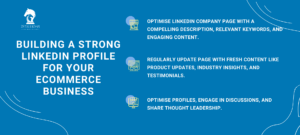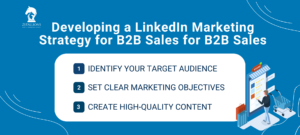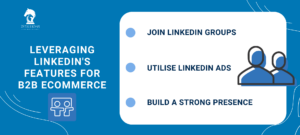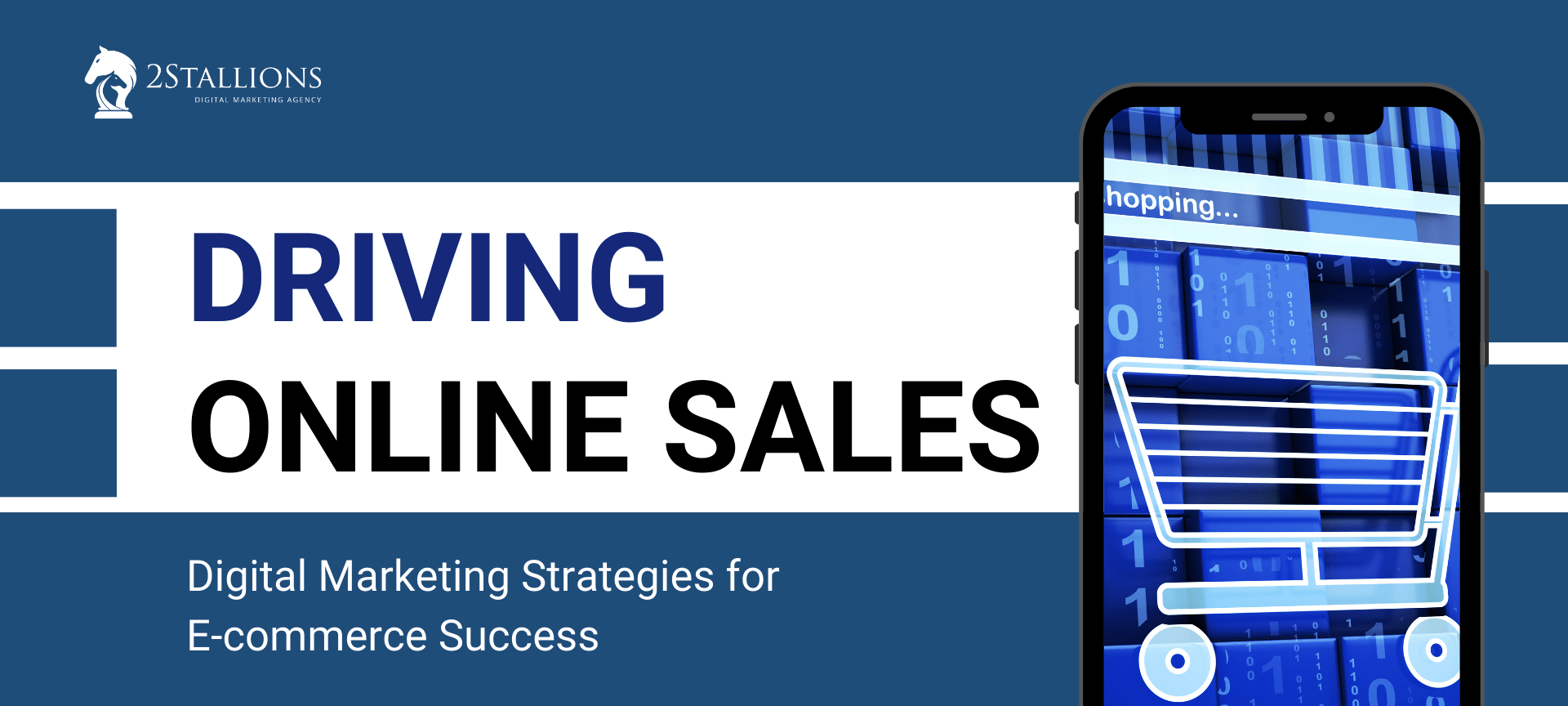Content
SHARE
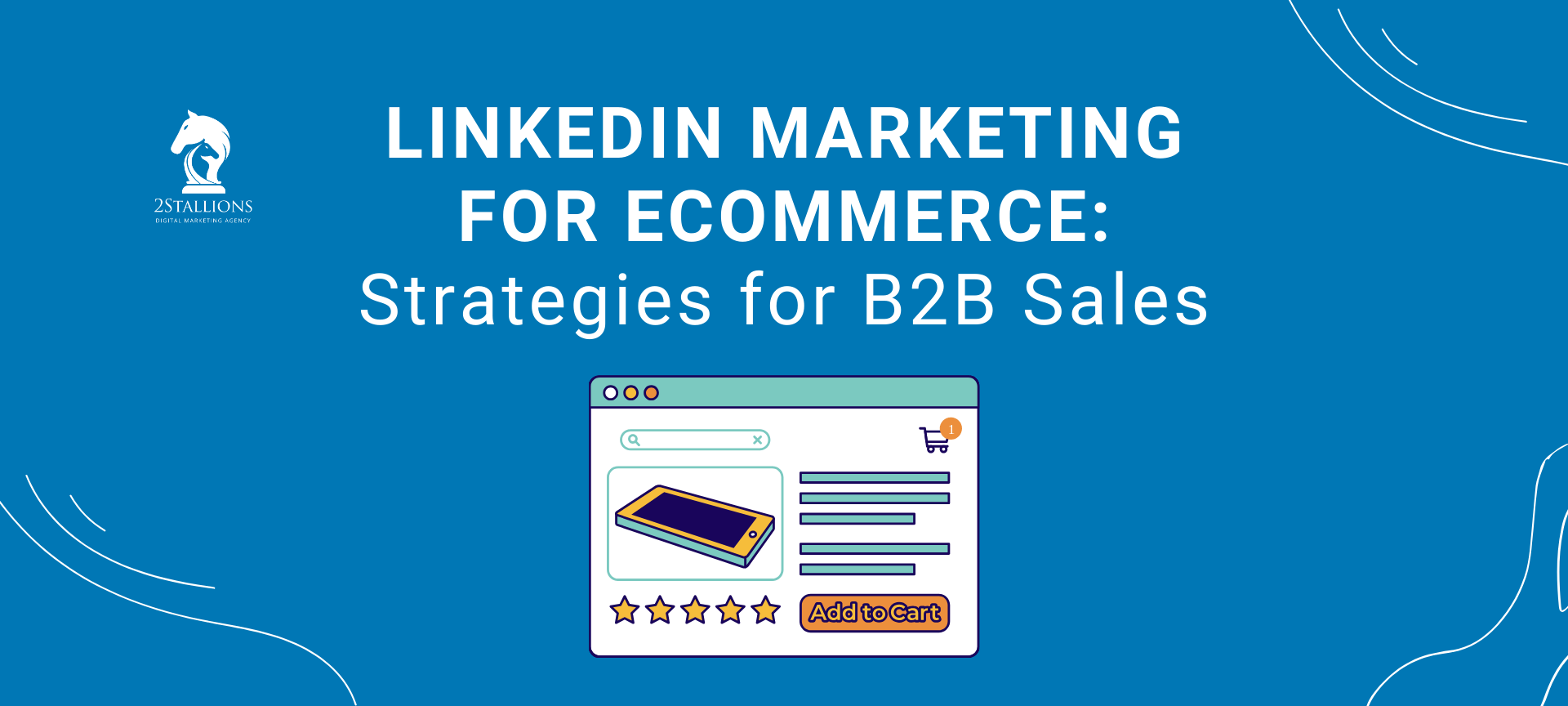
LinkedIn has emerged as a powerful platform for B2B sales in the ecommerce industry. With its unique features and professional user base, LinkedIn offers many opportunities for businesses to connect, engage, and convert potential customers. In this article, we will explore the various tactics, to help you make the most of LinkedIn for your B2B marketing efforts.
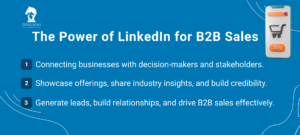
Understanding the power of LinkedIn for B2B sales
The role of LinkedIn in ecommerce cannot be underestimated. It provides a platform where professionals and businesses can network, share industry insights, and explore potential business opportunities. Unlike other social media platforms, LinkedIn is solely focused on professional connections, making it an ideal platform for B2B marketing.
LinkedIn’s impact on the world of business-to-business sales is profound. With over 700 million professionals from various industries and sectors, LinkedIn offers a vast pool of potential leads and prospects for B2B companies to tap into. The platform’s advanced search and targeting capabilities enable businesses to identify and connect with decision-makers and key stakeholders within their target market, facilitating more meaningful and productive interactions.
The Role of LinkedIn in Ecommerce
LinkedIn has become an essential tool for ecommerce businesses looking to connect with other companies, find potential customers or partners, and establish their brand presence in the B2B market. It allows companies to showcase their products/services, share valuable content, and engage in meaningful conversations within their industry.
Moreover, LinkedIn’s professional networking environment fosters trust and credibility, which is crucial in B2B sales. By actively participating in industry-specific groups, sharing thought leadership content, and engaging with relevant stakeholders, businesses can position themselves as experts in their field and build a reputation for reliability and expertise.
Why LinkedIn is Crucial for B2B Marketing
solutions. These professionals are more likely to engage with your content and consider your offerings. By leveraging LinkedIn’s powerful features, businesses can build strong relationships, generate leads, and drive B2B sales.
Furthermore, LinkedIn’s advertising options, such as sponsored content, InMail campaigns, and dynamic ads, provide B2B marketers with various tools to reach their target audience effectively. These advertising solutions allow businesses to tailor their messaging based on specific criteria, such as industry, company size, job title, and more, ensuring that their content resonates with the right audience and drives meaningful results.
Building a strong LinkedIn profile for your ecommerce business
A well-crafted LinkedIn profile is the foundation of your online presence on the platform. It is essential to optimise your company page and personal profiles to attract and engage potential B2B customers.
LinkedIn, often known as the professional networking platform, offers a unique opportunity for ecommerce businesses to showcase their expertise, products, and services to a targeted audience. You can establish credibility, build relationships, and drive business growth by strategically crafting your profile.
Crafting a Compelling Company Page
Your company page should provide detailed information about your ecommerce business, including a compelling description, relevant keywords, and a visually appealing cover image. Showcase your products/services, highlight key achievements, and share valuable content to establish credibility and attract potential customers.
Furthermore, it is crucial to regularly update your company page with fresh content such as industry insights, product updates, and customer testimonials. By keeping your page dynamic and engaging, you can stay top-of-mind with your audience and demonstrate your commitment to excellence.
Utilising Personal Profiles for Business Networking
Encourage your employees to create and optimise their profiles to represent your ecommerce business. Connect with industry peers, participate in relevant discussions, and share thought leadership content to expand your network and foster meaningful business connections.
Personal profiles are vital in humanising your brand and establishing trust with potential customers. By showcasing the expertise and personality of your team members, you can create a more authentic connection with your audience and differentiate your business from competitors.
Developing a LinkedIn marketing strategy for B2B sales
Creating a well-defined marketing strategy is crucial for successful B2B sales on LinkedIn. It helps you identify your target audience, set clear marketing objectives, and determine the most effective ways to engage and convert potential customers.
When crafting a LinkedIn marketing strategy for B2B sales, it’s important to delve deeper into the platform nuances. LinkedIn is a professional networking site that offers a unique environment for businesses to connect with other professionals in a more formal setting. Understanding the etiquette and unwritten rules of engagement on LinkedIn can significantly impact the success of your marketing efforts.
Identifying Your Target Audience on LinkedIn
LinkedIn provides powerful targeting options that allow you to reach specific industries, job titles, and company sizes. By understanding your target audience, you can tailor your content and messages to resonate with their needs and interests, increasing your chances of success.
Moreover, conducting thorough research on your target audience’s behaviour on LinkedIn can provide valuable insights into the type of content they engage with the most. By analysing trends and preferences within your target demographic, you can tailor your marketing approach to align more closely with what resonates with them, thereby increasing the effectiveness of your B2B sales strategy.
Setting Clear Marketing Objectives
Businesses must have clear and measurable marketing objectives for their B2B sales on LinkedIn. Whether it is generating leads, increasing brand awareness, or driving website traffic, having well-defined goals will help you stay focused and measure the effectiveness of your LinkedIn marketing efforts.
Furthermore, aligning your marketing objectives with your overall business goals is key to ensuring a cohesive and integrated approach to LinkedIn marketing. By establishing a direct link between your B2B sales objectives and your broader business strategy, you can create a more streamlined and impactful marketing plan that drives tangible results.
Content Creation for LinkedIn B2B Marketing
Creating high-quality content is key to capturing the attention of B2B buyers on LinkedIn. Your content should be informative, engaging, and tailored to the needs and interests of your target audience.
When crafting content for LinkedIn B2B marketing, it’s essential to delve deep into the realm of your industry. By conducting thorough research and staying updated with the latest trends and developments, you can ensure your content remains relevant and valuable to your audience. Remember, quality content can inform and spark conversations and drive meaningful interactions.
The Importance of High-Quality Content
Your content should provide value to your audience. You must also share industry insights, best practices, and actionable tips that demonstrate your expertise and position your ecommerce business as a trusted authority in your niche. Engage your audience with compelling visuals, videos, and interactive content.
Furthermore, establishing a consistent brand voice and tone across all your content can help build brand recognition and loyalty among your B2B audience. Whether you adopt a professional and formal tone or a more conversational approach, ensure that it aligns with your brand identity and resonates with your target market.
Types of Content that Resonate with B2B Buyers
LinkedIn offers various content formats that you can leverage to engage B2B buyers. These include articles, blog posts, infographics, case studies, and whitepapers. Experiment with different formats to find what resonates best with your target audience and generates the most engagement.
Moreover, don’t underestimate the power of storytelling in your content creation efforts. Narratives have a unique way of capturing attention and fostering emotional connections with your audience. Consider incorporating customer success stories, behind-the-scenes glimpses of your business operations, or personal anecdotes that humanise your brand and make it more relatable to B2B buyers.
Leveraging LinkedIn’s features for B2B ecommerce
LinkedIn provides a range of features that can enhance your B2B ecommerce marketing efforts. By leveraging these features, you can maximise your visibility, engage with potential customers, and drive more B2B sales.
When delving into B2B ecommerce on LinkedIn, it’s essential to understand the platform’s nuances and intricacies. With over 700 million professionals worldwide, LinkedIn offers a vast pool of potential leads and business opportunities. By crafting a compelling profile that highlights your unique selling points and industry expertise, you can attract the right audience and establish credibility within your niche.
Making the Most of LinkedIn Groups
Joining and actively participating in relevant LinkedIn groups can help you expand your network, share valuable insights, and establish yourself as an industry expert. Engage in meaningful conversations, answer questions, and share your expertise to build relationships and attract potential customers.
Furthermore, LinkedIn groups provide a platform for networking with like-minded individuals and industry peers. You can position yourself as a thought leader in your field by actively participating in group discussions, sharing industry news and best practices, and offering solutions to common challenges. This enhances your brand reputation and opens doors to potential collaborations and partnerships.
Utilising LinkedIn Ads for Increased Visibility
LinkedIn ads allow you to target specific audiences and promote your ecommerce business to potential B2B customers. Get sponsored content, text ads, and dynamic ads to increase your visibility, drive website traffic, and generate leads.
Moreover, LinkedIn’s robust advertising platform offers advanced targeting options, allowing you to reach decision-makers and key stakeholders in your target industries. By tailoring your ad campaigns to address your audiences’ pain points and needs, you can increase the relevance and effectiveness of your marketing efforts. This targeted approach improves conversion rates and maximises the return on investment for your advertising spend.
In conclusion, LinkedIn is a powerful platform for B2B sales in the ecommerce industry. By understanding its potential, building a strong presence, developing a marketing strategy, creating valuable content, and leveraging its features, you can effectively reach and engage potential B2B customers, driving increased sales for your ecommerce business.
LinkedIn Marketing & Ecommerce FAQs
How can eCommerce businesses use LinkedIn for B2B sales?
eCommerce businesses can use LinkedIn for B2B sales by creating targeted advertising campaigns, leveraging LinkedIn’s extensive networking opportunities, and sharing content that showcases their expertise and industry insights.
What LinkedIn marketing strategies are effective for B2B eCommerce sales?
Effective strategies include using LinkedIn Ads to reach decision-makers, participating in industry-specific groups to increase visibility, and employing LinkedIn’s advanced search features to identify and connect with potential business clients.
What type of content works best for eCommerce businesses on LinkedIn?
The best content types for eCommerce businesses on LinkedIn include case studies, customer testimonials, behind-the-scenes posts about business operations, and articles that address industry trends and challenges.
How can businesses measure the success of their LinkedIn B2B strategies?
Businesses can measure the success of their LinkedIn B2B strategies by tracking metrics such as lead generation rates, engagement rates on posted content, conversion rates from LinkedIn referrals, and overall return on investment (ROI) from LinkedIn campaigns.

